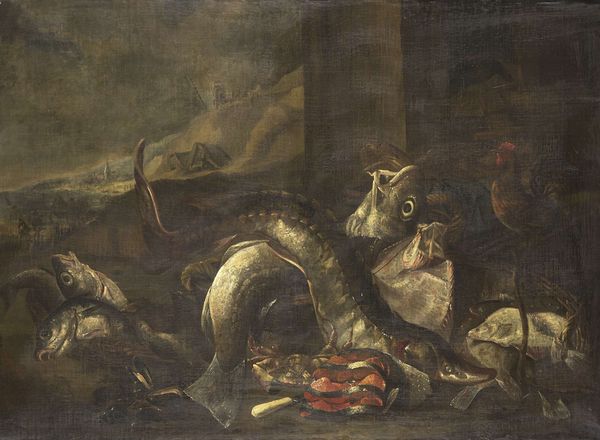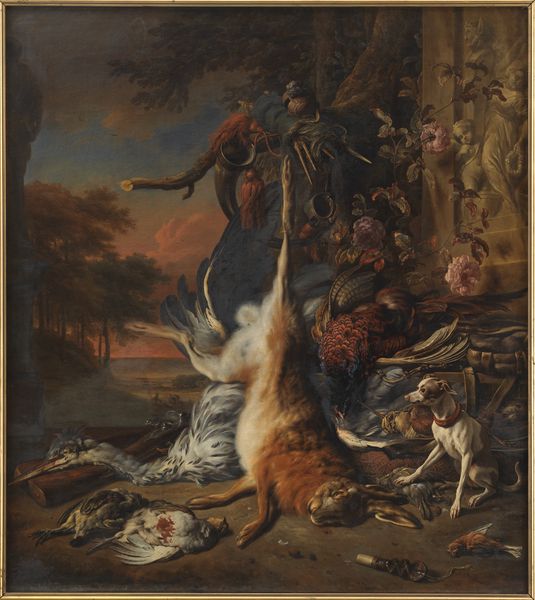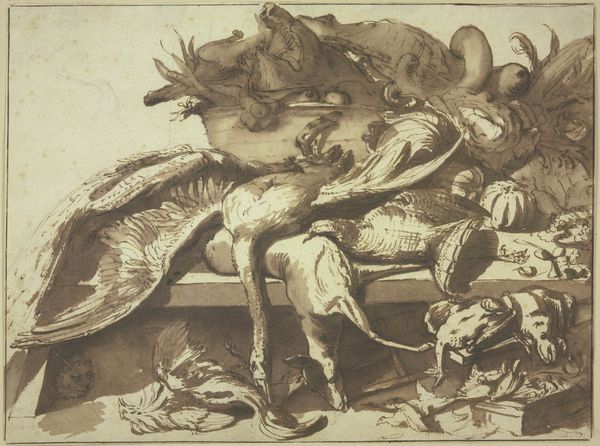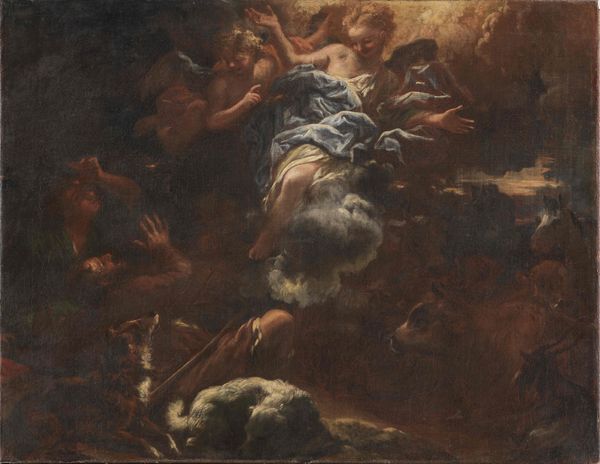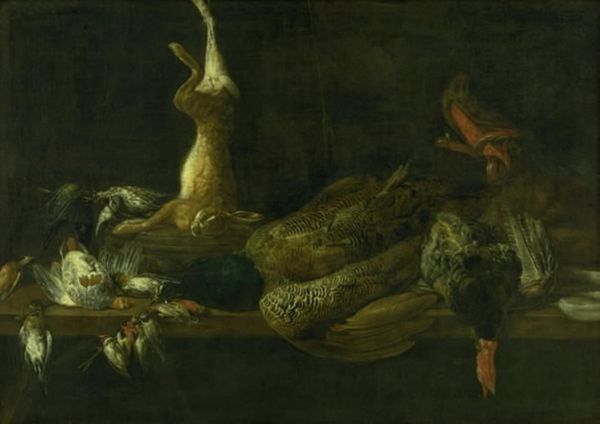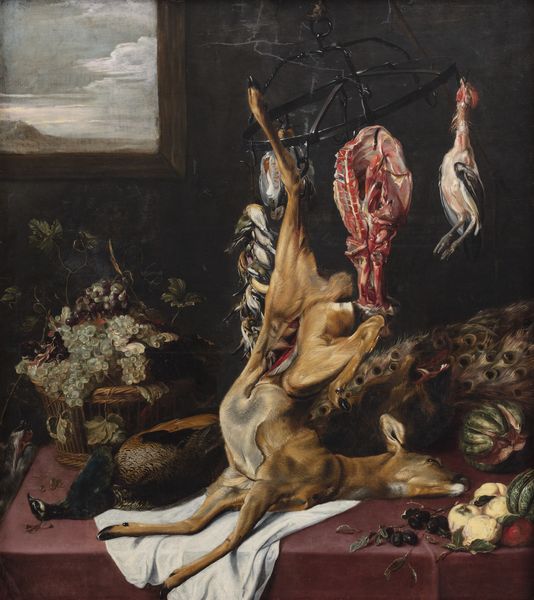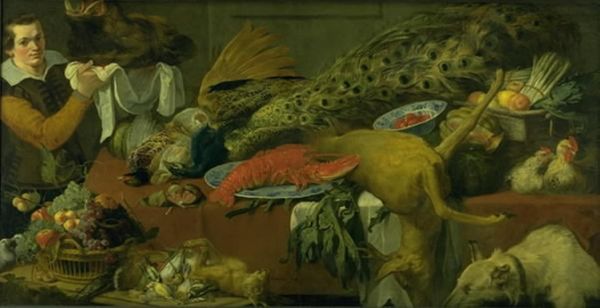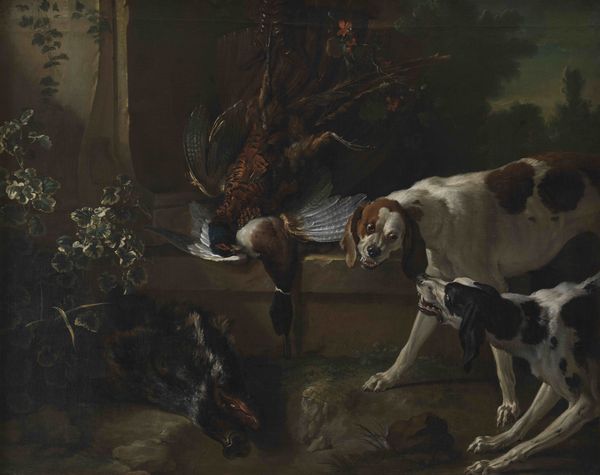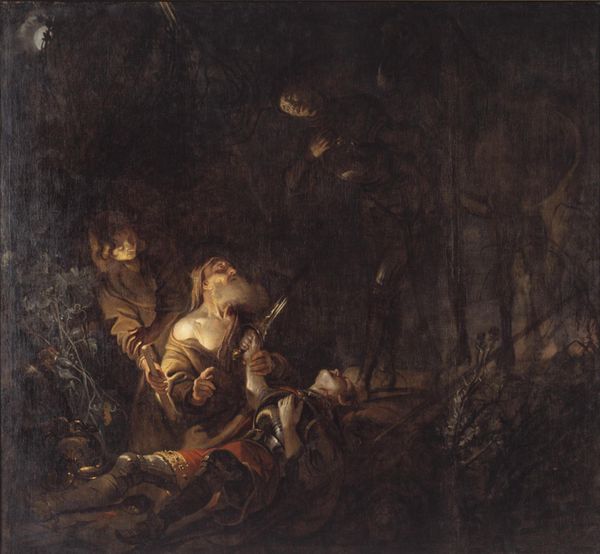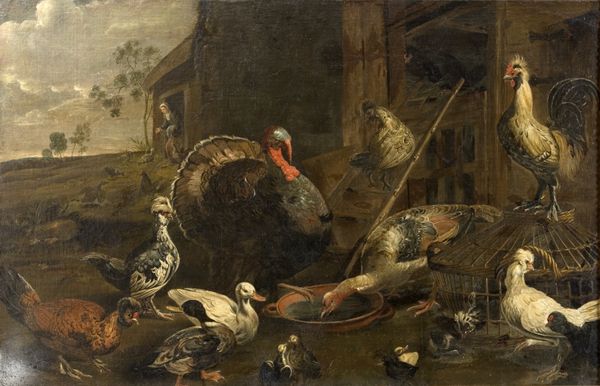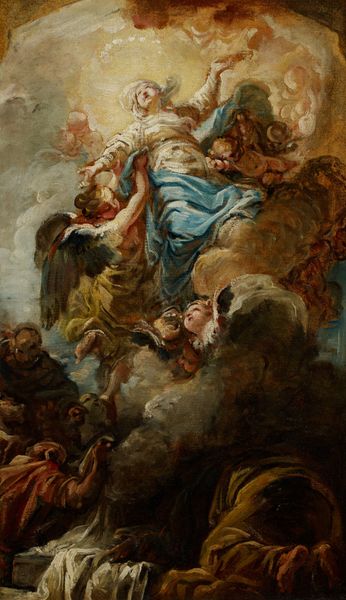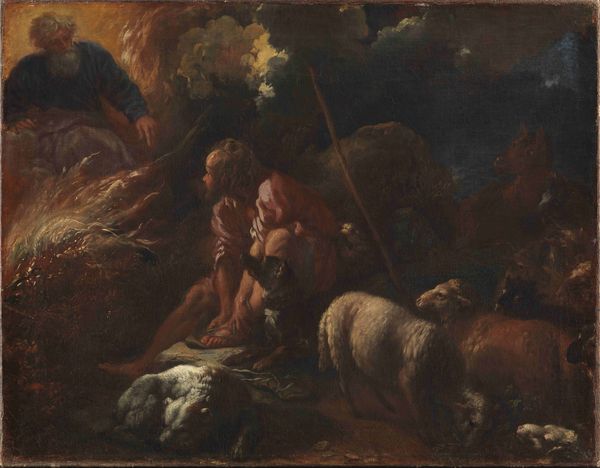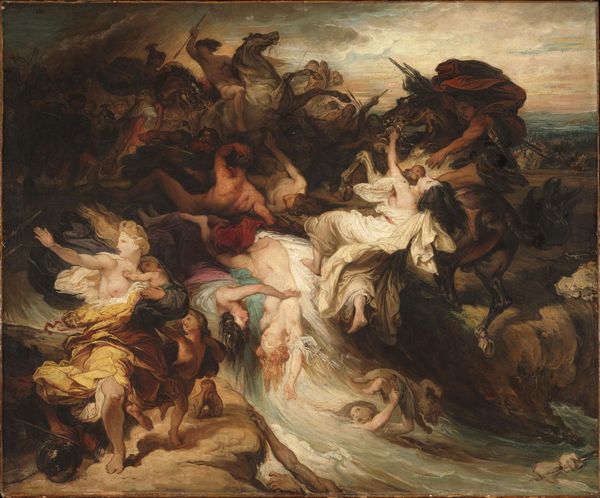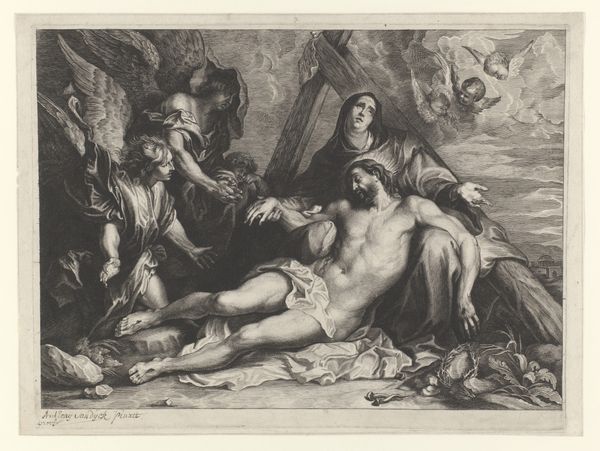
painting, oil-paint
#
narrative-art
#
baroque
#
painting
#
oil-paint
#
figuration
#
group-portraits
#
history-painting
#
realism
Copyright: Public domain
Curator: Peter Paul Rubens painted "The Recognition of Philopoemen" around 1609. The artwork bursts with drama, juxtaposing figures with a richly laden table of provisions. Editor: My eye is immediately drawn to the still life aspect. The sheer volume and texture of the raw materials displayed feel extravagant and yet slightly unsettling. The artist clearly luxuriated in depicting the different textures of the animal carcasses. Curator: Indeed. Let's unpack that. Rubens was working in an era where history painting was considered the height of artistic achievement. This particular canvas is based on a scene from Plutarch’s Lives, highlighting civic virtue. A serving woman recognizes the disguised general Philopoemen based on his demeanor. It underscores the socio-political idea that true nobility shines through even in the humblest circumstances. Editor: And that's where the still life becomes fascinating. Rubens deliberately uses this cornucopia of provisions, both sumptuous and crude, to serve as a very material, tangible backdrop to this drama of recognition. One wonders about the actual social conditions of producing such abundance. What were the conditions of labor, the material inputs that are shown here in excess? Curator: Excellent point. Think about Rubens’ patrons: wealthy merchants, the Church, and royalty. For them, this isn't merely about "daily bread". It reflects prosperity, their dominion over resources. Rubens’ realism reinforces their position. It also speaks to the visual language they would have understood - a statement piece for audiences steeped in classical texts, reinforcing cultural power. Editor: I'm captivated by how the opulent display is juxtaposed with the roughness of the unrecognized hero; a man of obvious character who is set against, and perhaps even diminished by, the weight of this very visceral demonstration of privilege. The contrast isn't lost on me, or anyone examining this painting in detail. Curator: Precisely. This painting invites reflections on the very construction of leadership and recognition throughout history. It urges viewers to analyze their understanding of power within social dynamics. Editor: To me, its power resides in its frank display of wealth and materiality. The question lingers in my mind, even beyond the virtue-based narrative. Whose labor went into building such excessive abundance, and how might we give it a proper reading within the political framework that determined art production at that time?
Comments
No comments
Be the first to comment and join the conversation on the ultimate creative platform.
